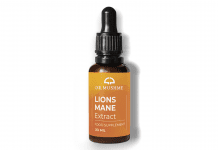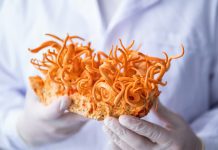
Medical cannabis can reach new heights – as long as the researchers and policymakers keep their feet on the ground.
Dr Delon Human, Head of Innovation and Medical Affairs of PharmaCielo Ltd., a global medical cannabis company headquartered in Toronto has decades of experience as a health consultant. This experience includes high-ranking appointments with both the World Health Organization (WHO) and World Medical Association (WMA), Dr Human has seen trends come and go. However, medical cannabis, he says, will only keep growing.
Having shaken off its counterculture mantle and taken root in health care, cannabis offers opportunities to a range of stakeholders – from innovators and investors to suffering individuals. As the industry matures, Dr Human wants to ensure the benefits continue to outpace the risks.
As it happens, Dr Human comes from a background of harm reduction and has spent much of his career fighting the excesses of tobacco, alcohol, and substance use. Which raises the question: why would a man who has devoted years to helping people ‘say no’ step into leadership position at a cannabis company?
In this intimate interview, Dr Human explains what drove his decision, why he thinks medical cannabis will disrupt the pharma industry as we know it, and why people should be playing close attention to the sector.
Let’s also not forget animals. If Dr Human’s predictions bear out, pets and farm animals will benefit as much from medical cannabis as their human counterparts.
Dr Human also explains what sets PharmaCielo apart—like the fact that the company grows its cannabis under open skies in Colombia (hence the word “cielo,” or sky, in the name) and partners with a combination of professional flower growers, rural farmers and indigenous peoples with centuries-old expertise to support its farming operations; or why PharmaCielo has placed its bets on cannabis oils and extracts, rather than dried flowers, for its finished products.
How does the public perception of cannabis products match up with reality?
There is still a lot of ignorance around this plant. Part of it has to do with the product’s legacy. As a symbol of so-called hippie culture in the sixties, cannabis still wears the ‘stoner’ hat in some people’s minds. However, if you strip away this historical association, cannabis is just a plant, just like basil or tomato. It happens to be a fascinating and multidimensional plant, with the potential to reduce human suffering.
The connotation of cannabis with smoking has also damaged public perception, though this knee-jerk image is fading as people become aware of the different ways of ingesting the product. Currently, about 70% of cannabis sold in Canada is dried, milled and smoked, but I believe the proportion will get a lot smaller.
This is for good reasons, as many people don’t like the idea of inhaling burning plants into their lungs. Most of the harm from cigarettes comes not from nicotine, but from the tar that gets into your lungs when you smoke. As scientist Michael Russell has said, “people smoke for the nicotine, but die from the tar.” That’s why I maintain there is no future in combustible cannabis. Inhaled cannabis is another matter. If you vaporise cannabis oil and inhale it, you don’t get the toxic ingredients of the smoked product.
There seems to be a sharp line drawn between the cannabinoids THC and CBD, with THC linked to recreational use and CBD to medical use. Any thoughts on this?
I believe the division between recreational and medical use is artificial and contributes to public misunderstanding. A clearer understanding of the key elements of the cannabis flower is required, beginning with the key distinction between psychoactive and non-psychoactive compounds. THC is psychoactive, meaning it alters perception and thinking, while CBD is not.
While THC is widely recognised for its recreational contribution, it also makes a significant medical contribution (for example, in mental health), often in combination with CBD. In many medicinal circumstances it is not an either/or argument, but rather about the combined benefit. A simple allocation to recreational or medicinal alone is misleading.
How is medical cannabis disrupting the traditional pharmaceutical industry?
In the traditional pharmaceutical industry, innovation and access are always pulling against each other. Broadly speaking, the more innovative the molecule, the more it costs and the greater the barriers to access. Poorer countries and poorer people don’t usually have the same level of access as richer ones. When you consider that most pharmaceutical products treat noncommunicable chronic diseases such as diabetes, arthritis or cancer, the traditional pharma model leaves a lot of people out.
Organisations such as the WHO spend a lot of energy trying to balance innovation and access, but the tension and unfairness persist.
In contrast, cannabis offers the possibility of both high innovation and high access. It is inexpensive to produce, and the right policies can ensure widespread access to those in need, disrupting the traditional marketplace.
How does the pharmaceutical industry view the entry of cannabis into the medication arena?
I would say there is some nervousness in the industry. It’s only natural to be nervous if you think your lunch might get eaten! At the same time, the industry recognises the opportunity. After the current entrepreneurial wave settles down, there’s every chance pharmaceutical manufacturers will step in.
Research and regulations
In the midst of the growing worldwide interest in medical cannabis, Dr Human argues for the importance of both scientific rigour and regulatory oversight.
How does evidence-based medicine intersect with medical cannabis?
All medicine is, or should be, evidence based. To put it another way, if it’s not based on evidence, it’s not medicine. As a natural product, medical cannabis does not entail the same approval process as synthetic drugs, but the industry depends and will continue to depend on research and evidence to support claims.
The types of evidence most respected in standard pharmaceutical research, such as randomised controlled trials and meta-analyses, will play an increasingly prominent role in medical cannabis research. Such studies are a powerful way to demonstrate benefit to both individuals and populations.
Does the science matter to consumers?
Yes, without question – today’s consumers are a savvy bunch. They, as much as the researchers and regulators, want to see the science behind the claims. When medical cannabis was illegal across the board, research naturally ground to a halt. Now that we have the cultural climate to conduct research, we need to do a lot more of it.
How do you think the industry should be regulated?
We need a global approach. At the moment, it is nation by nation (or in the US state by state). The WHO has the opportunity to participate in the development of a new global medicinal industry and introduce proportionate risk-based regulations or guidelines. This modern approach to regulation focuses on controlling access based on the probability of harms, rather than attempting to eliminate all possible harms. For example, youth and psychiatric patients may have a greater vulnerability to harm from cannabis than the general population, so we need more stringent regulations for these groups. To make things still more complicated, we must consider not just harms to the individual, but to families and societies. There’s also relative harm to consider – for example, the harms of cannabis vs those of alcohol.
Finally, regulators will need to step in with standards and requirements for different categories of cannabis products, just as we currently have for cosmetics, food supplements, over-the-counter drugs, and prescription medications.
How should cannabis products be labelled and taxed?
THC and CBD content should be listed as two separate figures. Ideally, the labelling should also specify whether the product contains enough THC to have mind-altering effects. I believe that cannabis products should be taxed in proportion to their risk-benefit profile. It wouldn’t make sense to tax medicinal products as highly as, say, cigarettes which in many jurisdictions in intended as a deterrent, and thereby create a financial barrier for people of limited means, causing societal harm.
Looking ahead
From his vantage point at the centre of a dynamic industry, Dr. Human makes bold predictions about how future generations will use cannabis.
What applications of cannabis show the greatest immediate promise?
Cannabis shows tremendous promise in dermatology, both aesthetic and medical. Some preliminary studies suggest that cannabis and its derivatives could have benefits in acne, dermatitis, pruritus, wound healing, and skin cancer. Cannabis could also play a role in skin care or in minimising swelling and discomfort prior to aesthetic procedures. Of course, the science has to catch up with the hype even as the industry explores this area.
Animal health also abounds with opportunities. Cannabinoids have been studied for a variety of veterinary health conditions, from cardiovascular disease and cancer to vomiting and anxiety. Think of the young Terrier who won’t stop barking when its owner goes out of the house, or the old Labrador in constant pain from arthritis. If a CBD product can make these animals’ lives easier without causing harm, why not? In fact, many pet owners have begun taking matters in their own hands and giving cannabis products to their pets to help with pain, anxiety, and other issues. The usual cautions apply. For example, dogs have more cannabinoid receptors in their brains than humans, so they run a greater risk of adverse effects from THC.
What is your general prediction for the sector?
Now that cannabis has been removed from the ‘war on drugs’ context, I expect the sector to grow exponentially. It is entirely possible, even likely, that cannabis-based products will penetrate the market as deeply as a variety of other health and wellness products have done in the past. As researchers and entrepreneurs continue to innovate in the space, they will find applications we haven’t even thought of yet. It will be interesting to watch.
How are cannabis products likely to be consumed in the future?
Future consumers will be more discerning, for one thing. They will want to know the specifics about ingredients and effects. I expect that consumers will move away from dried plants and toward oils, including oils you can vaporise and inhale. As a parallel example, use of cigarettes in Japan has decreased by 24 percent over the past three years, because many consumers have switched to heated tobacco products.
Consumers want delivery modes that are both easy and effective. On the face of it, oral tablets may seem like the simplest way to get cannabis into the body; however, digested cannabis takes 20 to 30 minutes to become bioavailable—that is, to reach the systemic circulation—and take effect. By comparison, I predict a stronger future for a variety of other consumption products including such means as diffused oil consumption, vaping and buccal products, which are placed between the gums and cheek and release their ingredients into the mouth’s rich network of blood vessels, among others.
Consumer testing will play an important role in this story. Consumers always let you know what works and what doesn’t, either in formal surveys or ‘with their wallets.’ We’ve seen this play out with food, coffee, and tobacco. Innovators need to listen to consumers at every step of the journey.
The PharmaCielo value proposition
Here, Dr. Human explains why he is putting his muscle behind PharmaCielo and what makes the company stand apart.
What led you to get involved in PharmaCielo?
I got involved because I recognise medical cannabis as an emergent industry in need of both innovation and sound policy. Like many other people, I was initially nervous because of the product’s legacy. I had spent most of my career working in food, drug and alcohol harm reduction, and stepping into the cannabis industry might seem like an about-face. But on balance, I viewed cannabis as having greater potential for good than for harm and wanted to be part of that. I chose to stand behind PharmaCielo because I agreed with the company’s commitment to science and environmental stewardship.
Why does PharmaCielo manufacture product in Colombia?
Colombia brings the highest-quality product to consumers at the lowest cost. As an equatorial country, Colombia has consistent and predictable weather year-round. The environmental conditions make it possible to grow plants under natural conditions, in contact with air and sunlight, rather than in closed facilities with costly artificial lighting. We currently own and cultivate over 30 hectares, and have contracts with other farming operations.
While labour is less expensive in Colombia than in, say, North America, we pay workers at least as well as local flower or coffee growers. In exchange, we receive the support of a multigenerational professional workforce highly experienced in flower cultivation, combined with scientific and laboratory staff with advanced degrees in a wide range of applicable scientific areas. It may sound like a cliché, but we view all our workers as part of the PharmaCielo family, whether they spend their days at the corner office, in the lab or on our farms.
How does Colombia approach cannabis regulation?
Perhaps due to prevailing stereotypes about the illegal drug trade, many people may not realise that Colombia now has strict and well-defined regulations surrounding medical cannabis. The country’s former president was instrumental in ending the ineffectual ‘war on drugs’ and establishing a framework for the legal, responsible production of cannabis products.
Law 1787, enacted in 2016, allows the cultivation and manufacture of cannabis for medicinal purposes. This progressive law has enabled companies to build the scientific, technological, legal, and commercial infrastructure for a healthy industry. What’s more, The United Nations allots CBD-production quotas to different countries, and currently Colombia has the largest quota.
Why does the company produce cannabis oils, as opposed to flower-based products?
We have committed to using extracts and oil in the medical market because they provide greater certainty for the user. If I give you a bottle of dried flowers, I can’t tell you the exact dosage. With an oil, I can. Also, physicians are more receptive to oils than to flowers. We haven’t ruled out the flower forever, because it may have advantages under certain circumstances, but for the time being our focus is on oils, which happens to align with industry trends.
What is PharmaCielo’s target market?
In short, planet earth. We currently have joint ventures in both Mexico and Italy, as we see the European Union (especially the big five of France, Germany, Italy, Spain, and the United Kingdom) and the Americas as key markets. With the explosion of interest in countries such as Thailand, Lesotho, and South Africa, Asia and Africa are also becoming important markets. This is not to say we believe everyone on earth should have unrestricted access to medical cannabis. Regulations are an important part of the equation.
How does PharmaCielo grow the cannabis?
The same way that millions of flowers are grown in Colombia—in open-air greenhouses. All plants require fertile soil, sunlight, and water to grow, and Colombia has these in abundance. In Colombia’s propitious climate, plants absorb carbon dioxide naturally and release large amounts of oxygen back into the atmosphere.
The PharmaCielo base operations are established as the core of a contract growing business strategy, which targets an ultimate capacity of 1 000 hectares. In doing this, our core operation acts as a nursery from which the ‘mother plants’ provide the seedlings which are transported to contract growers to raise to maturity before harvest, ensuring consistency of quality and cannabinoid profile, in each and every flower.
When the elements are combined, in economic terms, Colombia provides PharmaCielo with the competitive advantage of cultivating high-quality plants at a comparatively low cost because artificial light, heat and paid water resources are not required.
How do you grow the plants?
For our raw material, the seeds, we have built one of the largest seed banks in Colombia, with ownership of 186 cultivars sourced from a variety of forays throughout the country, into the mountains as well as with gratitude to the local indigenous groups partnering with us. They have been using cannabis for medicinal and harm-reduction purposes for centuries—for example, to wean people from alcohol addiction—and have been generous enough to share their 400-years-old seeds with us. We have an excellent team of botanists breeding the strains, using natural irrigation- and pesticide-management techniques.
Breeding is itself an art. Using techniques such as backcrossing, breeders can breed cultivars with specific genetic features, as a result of which we now have greater than 20 unique strains developed by our breeders and registered with the Colombian government for commercial cultivation – the most in the country, all with different quantities and proportions of THC and CBD.
Is PharmaCielo conducting formal research on these strains?
Yes, research is a big part of our corporate mandate. We want to contribute to the science
so that hard evidence will drown out unfounded claims.
A lot of research to date has focused on specific cannabinoids, primarily but not exclusively THC and CBD. At PharmaCielo we have a particular interest in whole-plant research—in other words, studying the effects of specific strains (or combinations of strains) rather than individual cannabinoids. That’s because whole strains can have effects beyond the sum of their single ingredients, due to the entourage effect. The industry has barely scratched the surface of this type of research, and we are pleased to be leading the charge.
The same scientific principles apply to whole-plant research as to individual cannabinoid research. If I want to prove, say, that Strain ‘X’ alleviates pain from sports injuries, I have to gather a sufficient number of patients with sports injuries, divide them into groups who do and don’t receive the strain, and compare outcomes. If I’m successful, and if other studies replicate my findings, I have a basis for making a claim.
What are PharmaCielo’s plans for launch and beyond?
We will bring our first products to market later in 2019, via business-to-business and direct-to-consumer channels. The ultimate range of products may include oil diffusions, extracts, lozenges, soft-gel capsules, lotions and ointments, inhalables, and energy drinks among others, based largely on market demand. We see a major opportunity in nutraceuticals, or cannabinoid-infused ingestible products to treat such conditions as insomnia, nausea, and some forms of pain. We also have our eye on mental health applications, including weaning people from substance abuse, as the indigenous people have done.
Animal applications are also of interest. The mouth offers rapid absorption, so a CBD wafer for animals could meet an important need. One of our advisors has conducted clinical trials on dogs who feel anxious and depressed after chemotherapy (based on the standard tools for evaluating anxiety and depression in animals) and found CBD to have markedly positive effects.
Any parting thoughts for people with a stake or interest in this industry?
I believe the industry can do a lot of good, if we continue to balance innovation with scientific rigour. Used in the right way, cannabis can contribute to human health and human enjoyment. It is my hope that we all keep this in mind as we move forward.
More about Dr. Human
After training as a family physician in South Africa and England, Dr. Human practiced clinical medicine for two decades and helped establish several medical centres in South Africa. The next phase of his life saw him complete an MBA at the Edinburgh Business School, then serve as secretary general to the World Medical Association, the global representative body for physicians, and later as an advisor to the World Health Organization’s director-general.
Along the way, he became a published author, international speaker, and consultant specialising in global health strategy, corporate and product transformation, harm reduction, and health communication.
More about PharmaCielo
PharmaCielo Ltd. is a global company headquartered in Toronto and publicly traded on the TSXV under the ticker PCLO. The company selected Canada as its corporate base because of the country’s high standards of financial accountability and regulation of the medical cannabis industry. The company’s operating subsidiary, PharmaCielo Colombia Holdings S.A.S., is based in Rionegro, Colombia. An ideal climate and favourable economic conditions, paired with a tight legal framework for cannabis licencing, make Colombia one of the world’s most hospitable nations for producing high-quality cannabis.
Some relevant definitions
- Cannabinoids: The term refers to a large group of chemical compounds found in the cannabis plant. These compounds engage with brain cell receptors involved in neurotransmission. The two best-known cannabinoids are tetrahydrocannabinol (THC) and cannabidiol (CBD).
- Cultivar: Cannabis strain resulting from crossbreeding and genetic stabilisation to exhibit desired traits.
- Backcrossing: A crossbreeding technique to bring out desired traits (such as specific concentrations of THC and CBD). The process usually entails breeding a plant with one of its parents to reinforce the genes responsible for the trait.
- Entourage effect: This concept posits that the non-psychoactive compounds in cannabis can influence the psychoactive effects of the plant as a whole. As an example, research suggests that co-administration of CBD reduces the negative effects of THC on memory.
David Gordon
Chief Corporate Officer
PharmaCielo
+1 4163158741
d.gordon@pharmacielo.com
https://www.pharmacielo.com/
www.instagram.com/pharmacielocolombia
Please note, this article will appear in issue 10 of Health Europa Quarterly, which will be available to read in July 2019.




















L’exposé est très intéressant,et conforte mon raisonnement sur le cannabis médical.Je souhaite une évolution rapide de Pharmacielo.Je vais d’ailleurs acheter des action”Pharmacielo”.Bonne réussite à toute votre équipe.